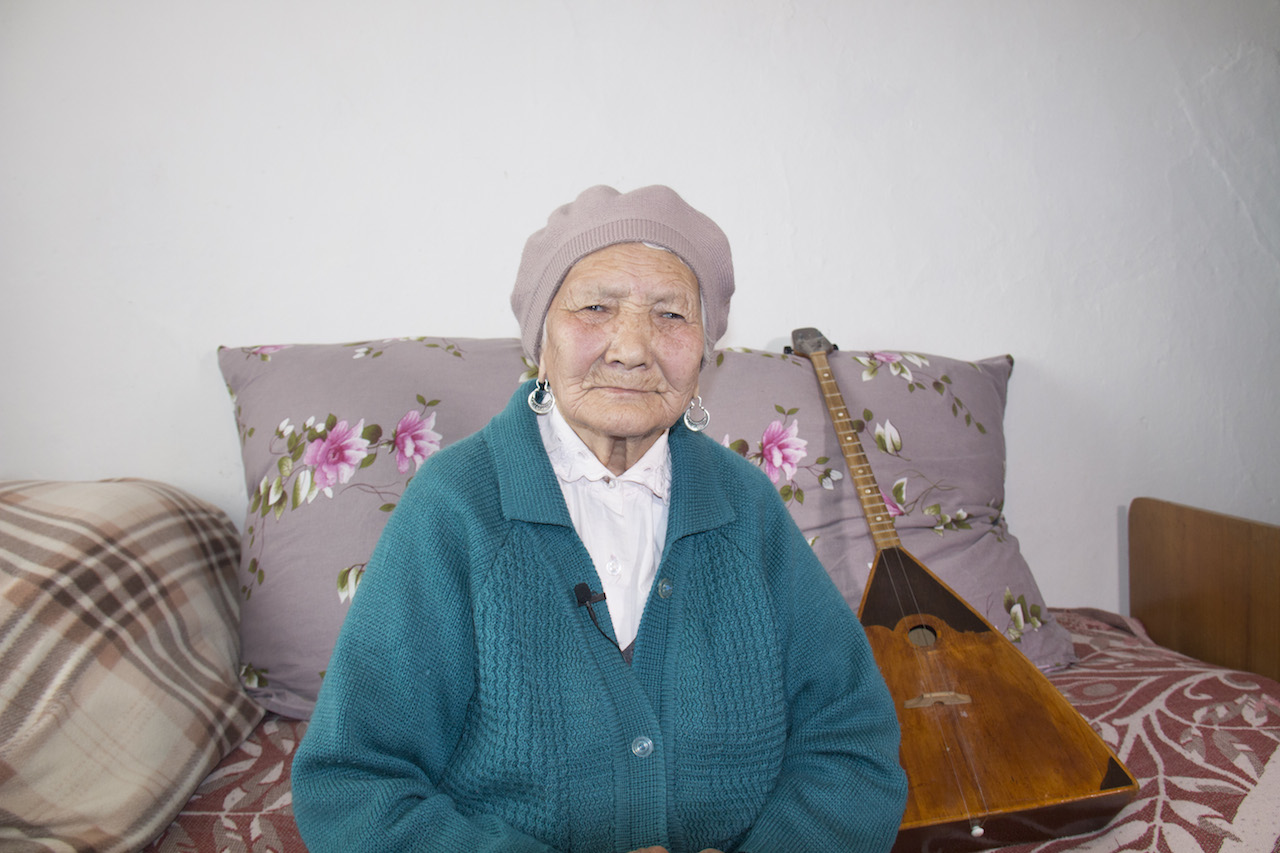Kalmyk Cultural Heritage Project (LIVESTOCK BREEDING/CAMELS)

| Created: | 2015-04-13 12:40 |
|---|---|
| Institution: | Department of Archaeology and Anthropology |
| Editors' group: | (not set) |
| Description: | (No description) |
Media items
This collection contains 17 media items.
Media items
Alena Lidzhieva, How to Make Female Camels Accept Their Newborn
41 views
A female camel is pregnant for 11 months. Sometimes female camels reject their calves. In order to make them accept their calves young Kalmyk women play on the dombra instrument...
Collection: Kalmyk Cultural Heritage Project (LIVESTOCK BREEDING/CAMELS)
Institution: Department of Archaeology and Anthropology
Created: Wed 29 Apr 2015
Alexei Naranov, About Camels
16 views
Collection: Kalmyk Cultural Heritage Project (LIVESTOCK BREEDING/CAMELS)
Institution: Department of Archaeology and Anthropology
Created: Mon 7 Aug 2017
Bembya Lidzhiev, About Camels and Other Livestock
0 views
Collection: Kalmyk Cultural Heritage Project (LIVESTOCK BREEDING/CAMELS)
Institution: Department of Archaeology and Anthropology
Created: Sun 16 Jun 2019
Bembya Lidzhiev, About Camels and Other Livestock
3 views
Collection: Kalmyk Cultural Heritage Project (LIVESTOCK BREEDING/CAMELS)
Institution: Department of Archaeology and Anthropology
Created: Sun 16 Jun 2019
Camel Race
23 views
This video features a camel race held at the hippodrome in Elista in May 2016. The race includes four camels.
Collection: Kalmyk Cultural Heritage Project (LIVESTOCK BREEDING/CAMELS)
Institution: Department of Archaeology and Anthropology
Created: Wed 6 Jul 2016
Dmitriy Mandzhiev, A Story About Camel Theft
7 views
Dmitriy relays a story about how his ancestors stole camels from another clan.
Collection: Kalmyk Cultural Heritage Project (LIVESTOCK BREEDING/CAMELS)
Institution: Department of Archaeology and Anthropology
Created: Sun 28 Oct 2018
Dmitriy Mandzhiev, About Camels
14 views
Collection: Kalmyk Cultural Heritage Project (LIVESTOCK BREEDING/CAMELS)
Institution: Department of Archaeology and Anthropology
Created: Sun 21 Jan 2018
Leonid Khochiev, About Camels and Sheep
7 views
Leonid talks about how people bred camels and sheep in the past.
Collection: Kalmyk Cultural Heritage Project (LIVESTOCK BREEDING/CAMELS)
Institution: Department of Archaeology and Anthropology
Created: Fri 27 Jul 2018
Leonid Ochir-Goryaev, About Camels
15 views
Leonid talks about the Kalmyk species of camel.
Collection: Kalmyk Cultural Heritage Project (LIVESTOCK BREEDING/CAMELS)
Institution: Department of Archaeology and Anthropology
Created: Tue 23 May 2017
Polina Fedorova, About Camel Meat
24 views
In the past, the Kalmyks ate beef and horse meat. The poor ate camel meat. People who ate camel meat had pimples on their faces. The camel’s pelt and humps were used to make...
Collection: Kalmyk Cultural Heritage Project (LIVESTOCK BREEDING/CAMELS)
Institution: Department of Archaeology and Anthropology
Created: Tue 31 May 2016
Polina Fedorova, How to Make Female Camels Accept Their Newborn
15 views
Sometimes female camels reject their calves. Female camels are jealous and squeamish animals. If a child touched a calf, its mother could reject it. In order to help the calf...
Collection: Kalmyk Cultural Heritage Project (LIVESTOCK BREEDING/CAMELS)
Institution: Department of Archaeology and Anthropology
Created: Wed 1 Jun 2016
Sangadzhi-Garya Dzhekiev, About Camels
8 views
Sangadzhi-Garya reminisces about the camels that he saw in his childhood. Requiring no care or supervision, camels grazed by themselves. Since their tongues are hard, they could...
Collection: Kalmyk Cultural Heritage Project (LIVESTOCK BREEDING/CAMELS)
Institution: Department of Archaeology and Anthropology
Created: Thu 14 Mar 2019
Sergei Olzeev, A Story About a Camel Herder
10 views
Collection: Kalmyk Cultural Heritage Project (LIVESTOCK BREEDING/CAMELS)
Institution: Department of Archaeology and Anthropology
Created: Thu 26 Apr 2018
Tatyana Dordzhieva, About Camels
2 views
Tatyana reminisces about her childhood experience of witnessing a camel being slaughtered. She also says that when a she-camel rejects her calf, Kalmyka sing a song called...
Collection: Kalmyk Cultural Heritage Project (LIVESTOCK BREEDING/CAMELS)
Institution: Department of Archaeology and Anthropology
Created: Sat 13 Jul 2019
Valeriy Bolaev, Ulyumdzhi Mandzhiev, About Camels
21 views
Valeriy says that there are only 5,000 camels left that can be described as of Kalmyk breed. The majority of them are in Astrakhan oblast’.
Ulyumdzhi Mandzhiev adds that camels...
Collection: Kalmyk Cultural Heritage Project (LIVESTOCK BREEDING/CAMELS)
Institution: Department of Archaeology and Anthropology
Created: Thu 28 Apr 2016
Vasiliy Sukhotaev, About Camel Breeding
4 views
Vasiliy says the following: Many children today have never even seen a camel because almost no one keeps them anymore. In the past we had many camels that pulled carts and were...
Collection: Kalmyk Cultural Heritage Project (LIVESTOCK BREEDING/CAMELS)
Institution: Department of Archaeology and Anthropology
Created: Sun 5 May 2019
Zurgan Lidzhieva, About Camels
10 views
Collection: Kalmyk Cultural Heritage Project (LIVESTOCK BREEDING/CAMELS)
Institution: Department of Archaeology and Anthropology
Created: Mon 1 May 2017

